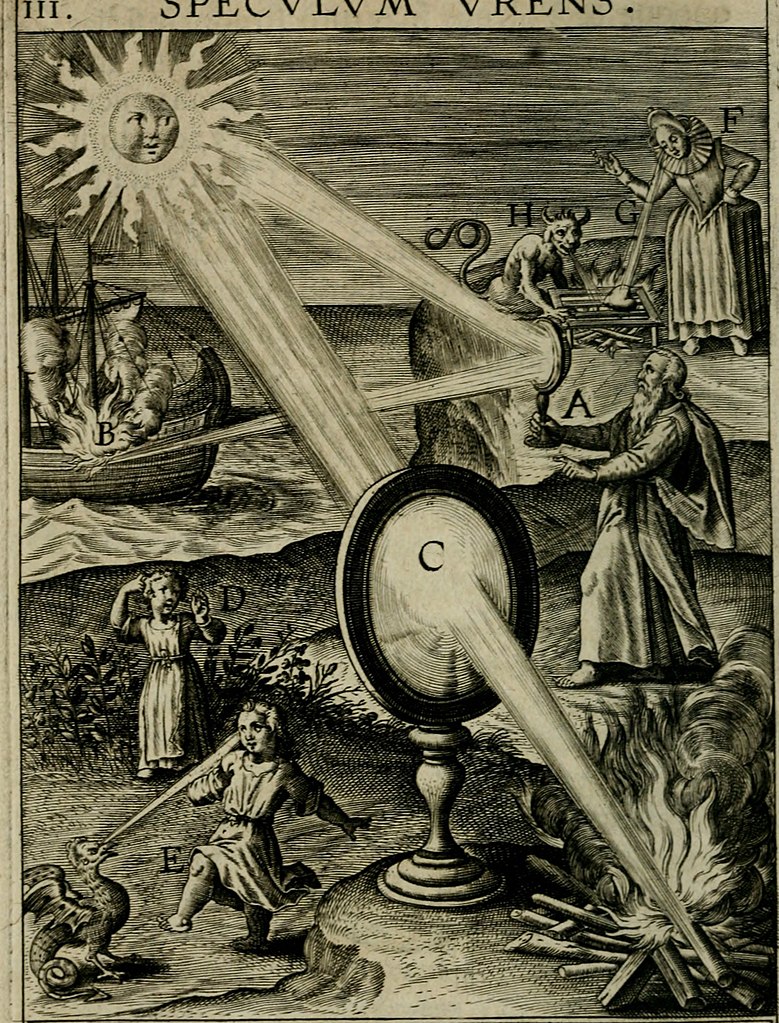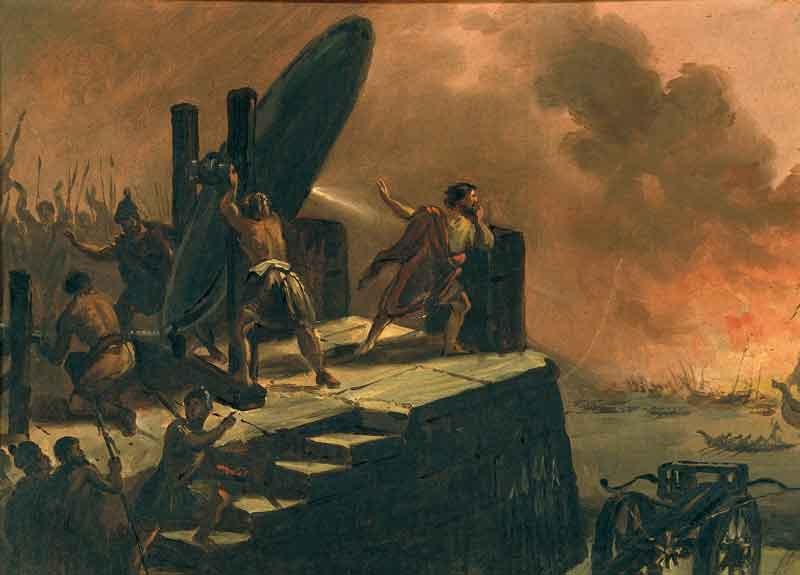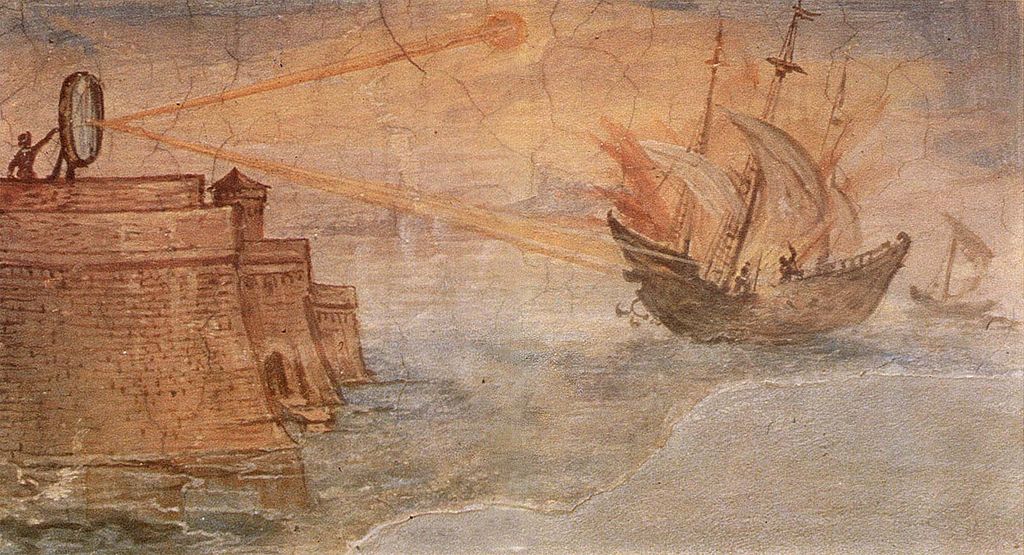 rchimedes of Syracuse was an ancient Greek mathematician, physicist, and engineer who made numerous significant contributions to the fields of mathematics and science. Among the legendary tales associated with Archimedes is the story of his mirror or “burning glass,” which was said to possess magical powers capable of setting enemy ships on fire. In this article, we delve into the legend of Archimedes’ mirror, exploring its historical context, examining the scientific principles behind it, and separating fact from fiction.
rchimedes of Syracuse was an ancient Greek mathematician, physicist, and engineer who made numerous significant contributions to the fields of mathematics and science. Among the legendary tales associated with Archimedes is the story of his mirror or “burning glass,” which was said to possess magical powers capable of setting enemy ships on fire. In this article, we delve into the legend of Archimedes’ mirror, exploring its historical context, examining the scientific principles behind it, and separating fact from fiction.
The Historical Context of Archimedes’ Mirror
To understand the legend of Archimedes’ mirror, it is essential to delve into the historical context in which it originated. Archimedes lived during the 3rd century BCE, a time when the city-state of Syracuse in Sicily faced threats from the powerful Roman Republic. Syracuse was besieged by Roman forces, and it was in this tumultuous setting that Archimedes supposedly devised a remarkable defense mechanism.

According to historical accounts, Archimedes used mirrors or polished metal surfaces to concentrate sunlight and focus it on approaching Roman ships. The legend suggests that this concentrated light created intense heat, which in turn ignited the enemy vessels, effectively repelling the Roman forces. While the specifics of the story may be embellished over time, it highlights Archimedes’ ingenuity and his commitment to defending his city.
However, it is important to note that the historical evidence supporting the actual use of Archimedes’ mirror is scarce. The only surviving accounts of this story come from much later sources, such as the Roman writer Lucian of Samosata and the Byzantine scholar Anthemius of Tralles. These accounts were written centuries after the events they describe, raising questions about their accuracy and reliability.
The Scientific Principle Behind Archimedes’ Mirror
The concept behind Archimedes’ mirror is based on the principles of optics and the ability to focus light. Mirrors and polished surfaces can reflect and concentrate sunlight, creating a more intense beam of light. This phenomenon, known as “burning glass effect,” occurs when parallel rays of sunlight are focused to a point, generating high temperatures.
The burning glass effect has been known since ancient times and has been observed in various cultures. Ancient Greeks, Romans, and Egyptians were aware of the magnifying properties of lenses and mirrors. The use of curved mirrors or lenses to concentrate sunlight and create heat was not exclusive to Archimedes, but he is often associated with this phenomenon due to the legend surrounding his name.

While it is theoretically possible to use mirrors or other reflective surfaces to focus sunlight and create intense heat, the practicality of such a device for military purposes remains a topic of debate. The size and curvature required to focus sunlight effectively over long distances would be challenging to achieve in a real-world setting. Additionally, factors such as atmospheric conditions and the movement of ships would further complicate the feasibility of using Archimedes’ mirror as a weapon.
Separating Fact from Fiction
While the legend of Archimedes’ mirror has captured the imagination of many, it is essential to separate fact from fiction. The historical evidence supporting the actual use of this device during the siege of Syracuse is limited. The story may have been embellished over time, becoming a part of popular mythology.
However, the significance of Archimedes’ mirror lies not in its literal existence, but in the recognition of Archimedes as a brilliant scientist and engineer. Archimedes made groundbreaking contributions to mathematics, physics, and engineering, leaving a lasting impact on the scientific world. His work on hydrostatics, leverages, and the calculation of pi is far more substantial than the legend of his mirror.
In conclusion, while the legend of Archimedes’ mirror has persisted throughout history, its true historical accuracy remains uncertain. It is important to approach such stories with a critical mindset and rely on verified historical accounts. Regardless of the actual use of the mirror, Archimedes’ contributions to science and mathematics continue to inspire and influence generations of scientists and scholars.
The legend of Archimedes’ mirror is a captivating tale that highlights the ingenuity and brilliance of the ancient Greek mathematician and engineer. While the actual use of such a device remains uncertain, its association with Archimedes serves as a testament to his reputation as a pioneering thinker. By separating fact from fiction, we can appreciate Archimedes’ significant contributions to science and mathematics, which continue to shape our understanding of the world today.
Avid Writer with invaluable knowledge of Humanity!
Upcoming historian with over 30 million views online.
“You make your own life.”





